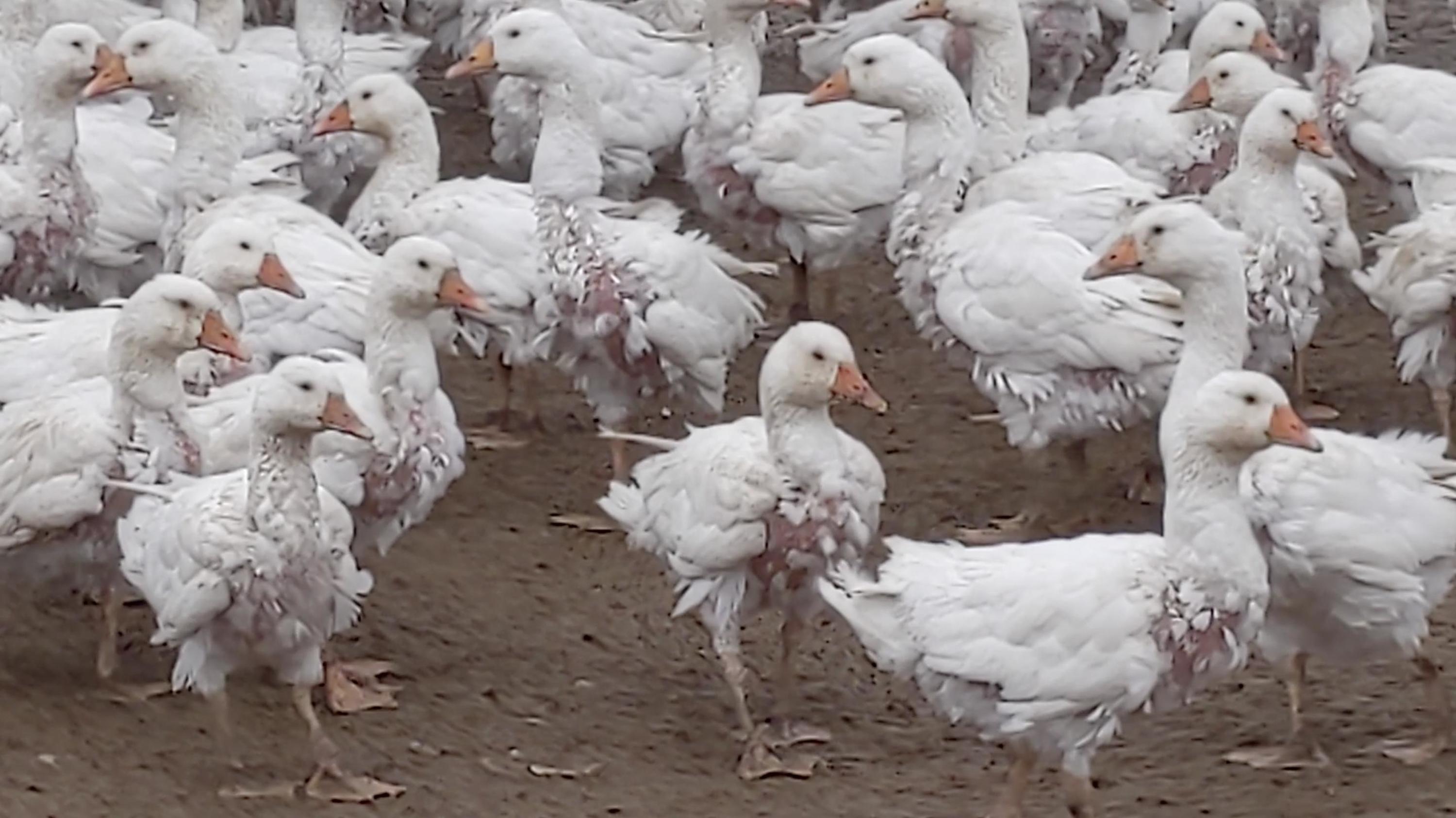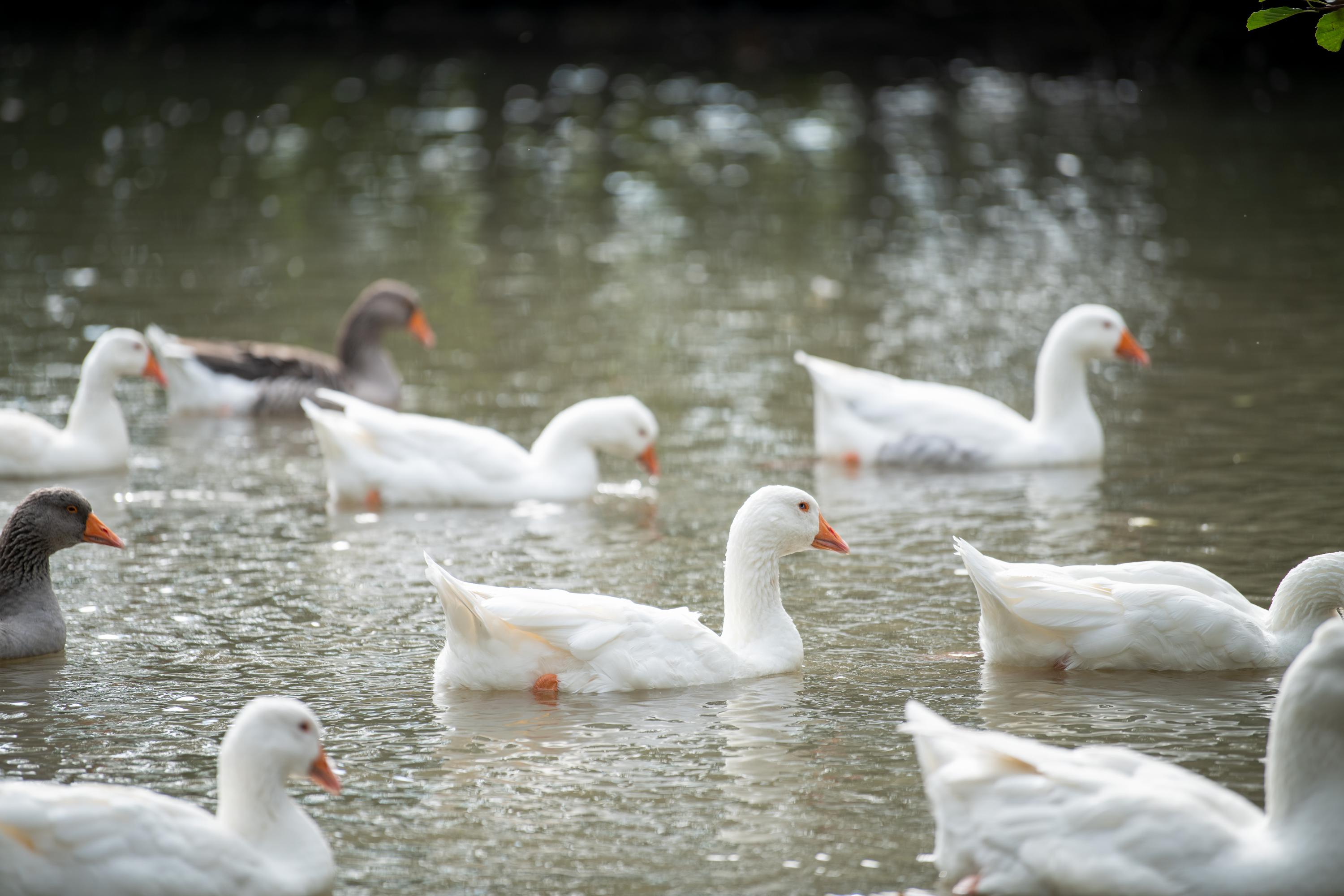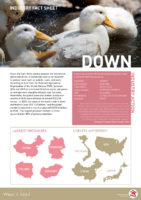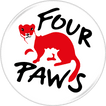
FOUR PAWS reveals animal cruelty in fashion
New footage shows live plucking is still occurring for feather and down
FOUR PAWS reveals new investigative footage that confirms that live plucking is still happening in the production of down and feather, a cruel practice that is spilling into fashion supply chains. Out of 35 farms visited, almost half of these were reported to have been participating in live plucking.
The disturbing footage documents geese vocalizing and excessively flapping their wings while being plucked alive, indicating the severe pain and distress experienced by the animals. Geese were also found to have skin lesions, bruises, and broken or dislocated wing bones, with some lying immobile or even dead.

The new footage serves as an alarm bell for fashion brands to take action to reduce their use of down and utilize animal welfare certifications to help mitigate the risks of live plucking. Brands also need to go the extra mile to ensure auditing also occurs at parent farms, where live plucking was also documented.
Despite the practice of live plucking being repeatedly reported over the years, less than 5% of the global supply of down and feathers is certified to an animal welfare certification that mitigates the practice. This is a highly concerning statistic and regretful indication as to the level of care being ensured and considered for these birds.

The aim of live plucking is to maximize the number of down and feathers produced, while making sure that the quality is higher than if they are obtained from abattoirs. Geese on parent farms are at high risk of live plucking because they are kept for longer (4-5 years) and can be subject to live plucking more frequently than the animals kept for meat.

Alternatives to down have existed on the market for years now, including recycled PET or polyester used by the likes of Adidas, The North Face, Patagonia, Helly Hansen, Vaude, Lululemon, and Kathmandu and more recently, exciting innovations such as FLWRDWN, which is down made from wildflowers and developed and used by Pangaia. Shoppers can help to end these scenes of cruelty by pledging to #WearItKind, by refining, reducing, and replacing animal-derived fashion purchases with animal-friendly alternatives.
Watch and share our video below for more information and to find out how together we can achieve an animal-friendly fashion future.
Note: Any advertisements that may appear during the viewing of this video are unrelated to FOUR PAWS. We assume no liability for this content.
Note: Any advertisements that may appear during the viewing of this video are unrelated to FOUR PAWS. We assume no liability for this content.
Frequently asked questions
Where was the footage obtained?
The footage was captured on Polish geese farms and shared with FOUR PAWS from a reliable source.
Who are the world’s biggest producers of down and feather?
China produces about 70% of the world’s down and feather products1, while Poland is the 3rd largest producer of feather and down in the world2. Other major exporters of down and feather include the USA and Germany3.
Is live plucking necessary?
Live plucking to obtain down and feather from geese is not necessary and could instead be collected and cleaned after slaughter.
What is down used for in fashion?
Down is used mainly as insulation in active/outdoor clothing and can be found in items such as puffer jackets, vests, and coats.
What should consumers look out for when purchasing winter and outdoor clothing items?
Consumers should avoid any uncertified down products as down from such supply chains have not been known to take any steps to mitigate the risks to live plucking. Instead, look for labels that identify down certified to either the Responsible Down Standard (RDS) or recycled down certified to the Global Recycle Standard (GRS) or Recycled Content Standard (RCS).
However, certified recycled down is not necessarily less cruel than virgin down, as it may have originally involved animal suffering, especially if it was not certified to begin with. Therefore, the best way to eliminate the risks to live plucking is to look for sustainable animal-free alternatives to down. Some of the brands pioneering these alternatives are Patagonia, Finisterre, Wuxly Movement, Houdini, NORDEN, Mini Rodini, Culthread, and tentree.

Down Industry Fact Sheet | Wear it Kind
In 2022, FOUR PAWS revealed new footage which shows that live plucking is still a prevalent occurrence in the global production of down and feather, a practice that is spilling into fashion supply chains.
Source
2 The Observatory of Economic Complexity n.d., Feather/down stuffing in Poland. [accessed 19 October 2022]. https://oec.world/en/profile/bilateral-product/feathers-and-down-used-for-stuffing/reporter/pol?redirect=true
3 The Observatory of Economic Complexity n.d., Bird feathers and skins. [accessed 19 October 2022]. https://oec.world/en/profile/hs/bird-feathers-and-skins?redirect=true

